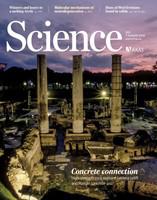 Ancient concrete
would seem to have little to do with volcano geology. In this
presentation, I will show similarities between the caprock of the Campi
Flegrei caldera (Italy), the lid of the hydrothermal system, and the
Roman-era concrete for which the region was known. Both materials require a
similar set of chemical reactions to give it the high durability and strength
caused by microstructures of intertwining fibrous minerals. The high strength
of this natural, fibrous rock is utterly fascinating. On the one hand,
it helps explain the ability of the caldera to withstand periods of
high-rate uplift (~2 m in two years) and delayed seismic
activity, posing an interesting rock physics question of how certain rocks are
capable of accommodating such deformation without immediately releasing the
stored energy through rock fracturing or cracking. On the other hand,
it testifies the presence of a natural process reflecting that
characterizing the cementitious pastes in modern and Roman concrete. The
formation of fibrous minerals by intertwining filaments confers shear and
tensile strength to the caprock of the hydrothermal system, contributing to its
ductility and increased resistance to fracture.
Ancient concrete
would seem to have little to do with volcano geology. In this
presentation, I will show similarities between the caprock of the Campi
Flegrei caldera (Italy), the lid of the hydrothermal system, and the
Roman-era concrete for which the region was known. Both materials require a
similar set of chemical reactions to give it the high durability and strength
caused by microstructures of intertwining fibrous minerals. The high strength
of this natural, fibrous rock is utterly fascinating. On the one hand,
it helps explain the ability of the caldera to withstand periods of
high-rate uplift (~2 m in two years) and delayed seismic
activity, posing an interesting rock physics question of how certain rocks are
capable of accommodating such deformation without immediately releasing the
stored energy through rock fracturing or cracking. On the other hand,
it testifies the presence of a natural process reflecting that
characterizing the cementitious pastes in modern and Roman concrete. The
formation of fibrous minerals by intertwining filaments confers shear and
tensile strength to the caprock of the hydrothermal system, contributing to its
ductility and increased resistance to fracture.

